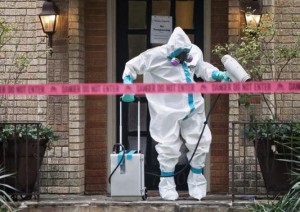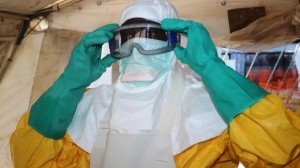Doubel Combustion Chamber
All Incinerators are Doubel Combustion Chamber with One Fuel Burner Each. After Burner Technology for Completely Combustion and Cleaner World.
Read MoreHigh Temperature Incineration
Temperature Range 800 Degree to 1200 Degree in Combustion Chamber. Temperature Thermocouple Monitor and Controller. High Quality Fire Brick and Refactory Cement.
Read MoreGet Lastest News
There are latest incinerator news like technical, public news, business tender for medical waste incinerator,animal incineration, pet cremation
Read MoreNanjing Clover Medical Technology Co.,Ltd.
Email: sales@clover-incinerator.com | Tel: +86-25-8461 0201
Regular model incinerator for market with burning rate from 10kgs to 500kgs per hour and we always proposal customer send us their require details, like waste material, local site fuel and power supply, incinerator operation time, etc, so we can proposal right model or custom made with different structure or dimensions.
Incinerator Model YD-100 is a middle scale incineration machine for many different usage: for a middle hospital sickbed below 500 units, for all small or big size family pets (like Alaskan Malamute Dog), for community Municipal Solid Waste Incineration, etc. The primary combustion chamber volume is 1200Liters (1.2m3) and use diesel oil or natural gas fuel burner original from Italy.
Latest Post
PA Veolia to destroy waste from Ebola patient’s Dallas apartment
Veolia Environmental Services off Texas 73 will receive and begin destroying a shipment of medical waste from deceased Ebola patient Thomas Eric Duncan’s apartment within the next eight to 10 hours, Mitch Osborne, Veolia Gulf Coast Branch Environmental Services general manager, said Thursday morning.
“The containers will contain disinfected waste from the apartment the patient was residing in,” Osborne said. “It’s something we can manage, and we know it’s going to draw a lot of attention because of the ‘E’ word. But we’re not bringing Ebola to Southeast Texas. We’re bringing waste products that have been packaged for our workers’ and our community’s safety.”
Osborne said the waste — strictly from the patient’s apartment, not from the hospital — was pre-treated, pre-cleaned and disinfected before it was placed into containers. Those containers were then placed inside 55-gallon drums that will be incinerated along with its cargo.
Port Arthur Mayor Deloris “Bobbie” Prince said the city does not have the authority to decide whether the waste may enter the city, or the surrounding areas, or not.
“We don’t have the authority to stop it,” she said. “Veolia is not in Port Arthur — it’s in an unincorporated area of Jefferson County.
“I wish that none of it would come this way, but since it is coming our direction, it’s comforting to know that the safety of the employees and the citizens has been considered throughout the whole process.
“There will be no emissions, no fumes coming from the incinerator. They have the equipment and the facilities to handle this safely, and Mitch has assured me it poses no risk to our citizens or to his employees.”
Osborne said Veolia was contacted by the Department of State Health Services about managing the disposal because of the capabilities of its on-site incinerator.
“We supplied them with packaging specifications so that we can feed it directly into our incinerator,” he said. “It will be disposed 12 to 18 hours after arrival.
Local Company Rushing Orders of Medical Waste Incinerator to West Africa
The Southern Illinois company that makes medical waste incinerators is now rushing an order to West Africa to help stop the Ebola virus from spreading.
We first reported on the ‘Medi-Burn’ in August when Carmi-based Elastec started offering its services to the United Nations.
Since then, the U.S. military has increased its response to the Ebola outbreak.
We’re told three Medi-Burn incinerators are being delivered to Texas overnight, and will then be transported to Sierra Leone.
The Medi-Burn is fueled by diesel and is self-contained – which means contaminated medical waste can be burned on-site.
Ebola Victim’s Belongings Sent To Texas Incinerator
PORT ARTHUR, Texas (AP) — A Texas incinerator has destroyed drums loaded with items believed to have been contaminated by a man with Ebola.
Veolia North America says the drums taken from a Dallas apartment where Thomas Eric Duncan became ill were destroyed Friday at the company’s incinerator in Port Arthur. Veolia says its incineration process destroyed viruses and pathogens with temperatures ranging from 1,500 to 2,100 degrees.
A crew of 15 people spent four days at the apartment where Duncan had been staying when he developed Ebola-related symptoms such as vomiting and diarrhea. They wore protective suits with gas masks while filling about 140 barrels with mattresses, Duncan’s sheets and carpet from the entire apartment.
Duncan, who carried the virus with him from his home in Liberia, died Wednesday at a Dallas hospital.
industrial waste management, medical waste diesel incinerator 100 kg gmbh,
The ash of belongings of Thomas Eric Duncan, the man who died from the Ebola virus in Texas, may not be headed for a hazardous waste landfill in Carlyss after all.
Chemical Waste Management on Monday said it has “no current plans” to accept incinerator ash from Veolia Environmental in Port Arthur, Texas. Veolia incinerated some of the decontaminated belongings from Thomas Eric Duncan’s apartment located in Dallas.
“After additional review, Chemical Waste Management, has notified the Veolia Environmental that it has no current plans to accept ash,” the company said in a news release. “While (our) facility is permitted by the state and federal government to accept waste of this type, and while accepting this waste poses no threat to the environment or human health, we do not want to make an already complicated situation, more complicated.”
The items incinerated included linen, bedding, and carpet were taken from the apartment where Duncan became ill.
On Sunday, Chemical Waste Management confirmed that it would received the ash and state Attorney General Buddy Caldwell said he would file a temporary restraining order to block the move.
No world yet on what will be done with the ash now.
U.S. needs to rethink Ebola infection controls, says CDC chief

Medical experts need to rethink how highly infectious diseases are handled in the United States, a U.S. health official said on Monday, after a Dallas nurse contracted Ebola despite wearing protective gear while caring for a dying Liberian patient.
As an outbreak of the deadly virus spread beyond West Africa, hospitals and nursing associations across the United States were taking a closer look at how prepared they were to handle such infections.
“We have to rethink the way we address Ebola infection control. Even a single infection is unacceptable,” Dr. Thomas Frieden, director of the U.S. Centers for Disease Control and Prevention, told reporters. “The care of Ebola is hard. We’re working to make it safer and easier.”
Frieden said health authorities are still investigating how the nurse became infected while caring for Thomas Eric Duncan in an isolation ward at Texas Health Presbyterian Hospital.
Duncan died last week and the nurse is the first person to contract the virus on U.S. soil, taking concerns about containing its spread to new heights.
The infected nurse is Nina Pham, 26, according to a Sunday school teacher at the church where her family worships and through a public records check of her address. Attempts to reach her family were not immediately successful.
The family was in shock when it learned the young woman had contracted Ebola, said Tom Ha, a close friend of the Pham family who is also a Bible studies teacher at the Our Lady of Fatima Catholic Church in Fort Worth.
“The mother was crying, very upset,” he told Reuters.
The Dallas nurse is “clinically stable,” Frieden said, and the CDC is monitoring others involved in Duncan’s care in case they show symptoms of the virus.
Frieden also apologized for remarks on Sunday, when the nurse’s infection was first disclosed, that suggested she was responsible for a breach in protocols that exposed her to the virus. Some healthcare experts said the comments failed to address deep gaps in training hospital staff to deal with Ebola. [ID:nL2N0S8014]
“I’m sorry if that was the impression given,” Frieden said. He said the agency would take steps to increase the awareness of Ebola at the nation’s hospitals and training for staff.
The Texas Nurses Association defended Pham in a statement, saying it was wrong to assume the nurse was to blame.
“The facts are not known about how the nurse in Dallas was exposed,” the association stated. “It is incorrect to assume that the nurse failed to follow protocols.”
At his news conference, Frieden said some changes in procedures had already been put into effect, including having staff monitor those putting on and taking off protective gear, and retraining staff on how to do so safely.
He said other steps were being considered including new types of protective clothing and possibly spraying down staff with solutions that could kill the virus if someone were to become contaminated.
Dr. Anthony Fauci, director of the National Institute of Allergy and Infectious Diseases, said in an interview with ABC that officials should consider sending Ebola patients only to a few “containment” hospitals.
President Barack Obama was briefed by Frieden and senior members of the administration about the second Dallas case and stressed that “lessons learned” from the CDC’s investigation should be shared with hospitals and healthcare workers across the country, the White House said.
Obama also spoke separately with U.N. Secretary General Ban Ki-Moon and with French President Francois Hollande about international efforts to contain the outbreak and to provide treatment centers in affected African nations.
A brief scare at Boston’s Logan International Airport caused emergency crews in protective gear to remove five passengers with flu-like symptoms from Emirates flight 237 from Dubai, but the CDC later said there was no Ebola threat.
EBOLA WASTE A CONCERN
Meanwhile, Louisiana’s top law enforcement official said he was granted a temporary restraining order to prevent the personal items of Duncan, who died on Wednesday, from being buried in a local landfill after being incinerated.
Louisiana Attorney General Buddy Caldwell said material collected from Duncan and the Dallas apartment where he was staying was taken to Port Arthur, Texas, on Friday to be incinerated. From there the incinerated material was to have gone to a hazardous waste landfill in Louisiana.
“There are too many unknowns at this point, and it is absurd to transport potentially hazardous Ebola waste across state lines,” Caldwell said in a statement after the restraining order was granted.
According to CDC guidelines, the Ebola virus does not survive on materials that have been incinerated.
The current Ebola outbreak is the worst on record and has killed more than 4,000 people, mostly in West Africa’s Liberia, Sierra Leone and Guinea. Duncan, a Liberian, was exposed to Ebola in his home country and developed the disease while visiting the United States.
Ebola, which can cause fever, vomiting and diarrhea, spreads through contact with bodily fluids such as blood or saliva.
The infection of the Dallas nurse is the second known to have occurred outside West Africa since the outbreak that began in March. It follows that of a nurse’s aide in Spain who helped treat a missionary from Sierra Leone, who died of the virus.
Officials said Pham’s pet dog, a 1-year-old King Charles Spaniel, would be kept safe while its owner was in the hospital. That contrasts with the dog of the health worker in Spain that was euthanized out of fear the animal could spread the disease, prompting protests from animal rights activists.
(Additional reporting by Julie Steenhuysen in Chicago, Jonathan Kaminsky in New Orleans, Marice Richter in Dallas and Roberta Rampton in Washington; Writing by Jon Herskovitz and Ken Wills; Editing by Michele Gershberg and Lisa Shumaker; Editing by Andrew Hay and Tom Brown)
FILED UNDER:
U.S.
Health












